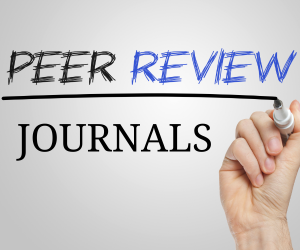THE SYSTEMATIC REVIEW OF GLAUCOMA AND ITS ASSOCIATIONS WITH FEMALE REPRODUCTIVE FACTORS
DOI:
https://doi.org/10.61841/8227z085Keywords:
Estrogen, Female reproductive factors, Glaucoma, TraiAbstract
Background: Estrogen may have a neuroprotective role in glaucoma, and estrogen insufficiency is thought to contribute to glaucomatous damage through both mechanical and vascular processes.
Methods: By comparing itself to the standards set by the Preferred Reporting Items for Systematic Review and MetaAnalysis (PRISMA) 2020, this study was able to show that it met all of the requirements. So, the experts were able to make sure that the study was as up-to-date as it was possible to be. For this search approach, publications that came out between 2014 and 2024 were taken into account. Several different online reference sources, like Pubmed and SCIENCE DIRECT, were used to do this. It was decided not to take into account review pieces, works that had already been published, or works that were only half done.
Result: In the PubMed database, the results of our search brought up 93 articles, whereas the results of our search on SCIENCE DIRECT brought up 76 articles. The results of the search conducted for the last year of 2014 yielded a total 41 articles for PubMed and 26 articles for SCIENCE DIRECT. In the end, we compiled a total of 6 papers, 4 of which came from PubMed and 2 of which came from SCIENCE DIRECT. We included six research that met the criteria.
Conclusion: In summary, a longer duration of OC usage may be related with a higher risk of OAG; however, it is unclear if OC use in general raises the risk of OAG or whether this potential association is mediated by IOP. An earlier age at natural menopause may increase the incidence of OAG. Most significantly, PMH use may be related with a lower IOP, and the estrogen-only kind of PMH may be associated with a lower risk of OAG.
References
Neustaeter A, Vehof J, Snieder H, Jansonius NM. Glaucoma in large-scale population-based epidemiology: a questionnaire-based proxy. Eye (Lond). 2021;35(2):508–16.
Madjedi KM, Stuart K V., Chua SYL, Foster PJ, Strouthidis NG, Luben RN, et al. The Association of Female Reproductive Factors with Glaucoma and Related Traits: A Systematic Review. Ophthalmol Glaucoma. 2022 Nov 1;5(6):628–47.
Lee JY, Kim JM, Kim SH, Kim IT, Kim HT, Chung PW. Associations Among Pregnancy, Parturition, and Open-angle Glaucoma: Korea National Health and Nutrition Examination Survey 2010 to 2011. J Glaucoma. 2019;28(1):14–9.
Shin YU, Hong EH, Kang MH, Cho H, Seong M. The Association between Female Reproductive Factors and Open-Angle Glaucoma in Korean Women: The Korean National Health and Nutrition Examination Survey v. J Ophthalmol. 2018 Jun 20;2018.
Lam JSH, Tay WT, Aung T, Saw SM, Wong TY. Female reproductive factors and major eye diseases in Asian women -the Singapore Malay Eye Study. Ophthalmic Epidemiol. 2014;21(2):92–8.
Vajaranant TS, Grossardt BR, Maki PM, Pasquale LR, Sit AJ, Shuster LT, et al. Risk of glaucoma after early bilateral oophorectomy. Menopause. 2014;21(4):391–8.
Newman-Casey PA, Talwar N, Nan B, Musch DC, Pasquale LR, Stein JD. The potential association between postmenopausal hormone use and primary open-angle glaucoma. JAMA Ophthalmol. 2014;132(3):298–303.
Vajaranant TS, Ray RM, Pasquale LR, Mares JA, Ritch R, Gower EW, et al. Racial Differences in the Effects of Hormone Therapy on Incident Open-Angle Glaucoma in a Randomized Trial. Am J Ophthalmol. 2018 Nov 1;195:110–20.
Lee SSY, Yazar S, Pasquale LR, Sanfilippo PG, Hewitt AW, Hickey M, et al. The Relationship Between Optic Disc Parameters and Female Reproductive Factors in Young Women. Asia Pac J Ophthalmol (Phila). 2019;8(3):224–8.
Hoopes AJ, Teal SB, Akers AY, Sheeder J. Low Acceptability of Certain Contraceptive Methods among Young Women. J Pediatr Adolesc Gynecol. 2018;31(3):274–80.
Hossain M, Khan M, Ababneh F, Shaw J. Identifying factors influencing contraceptive use in Bangladesh: Evidence from BDHS 2014 data. BMC Public Health. 2018 Jan 30;18(1).
Downloads
Published
Issue
Section
License

This work is licensed under a Creative Commons Attribution 4.0 International License.
Licensing
Ninety Nine Publication publishes articles under the Creative Commons Attribution 4.0 International License (CC BY 4.0). This licensing allows for any use of the work, provided the original author(s) and source are credited, thereby facilitating the free exchange and use of research for the advancement of knowledge.
Detailed Licensing Terms
Attribution (BY): Users must give appropriate credit, provide a link to the license, and indicate if changes were made. Users may do so in any reasonable manner, but not in any way that suggests the licensor endorses them or their use.
No Additional Restrictions: Users may not apply legal terms or technological measures that legally restrict others from doing anything the license permits.





